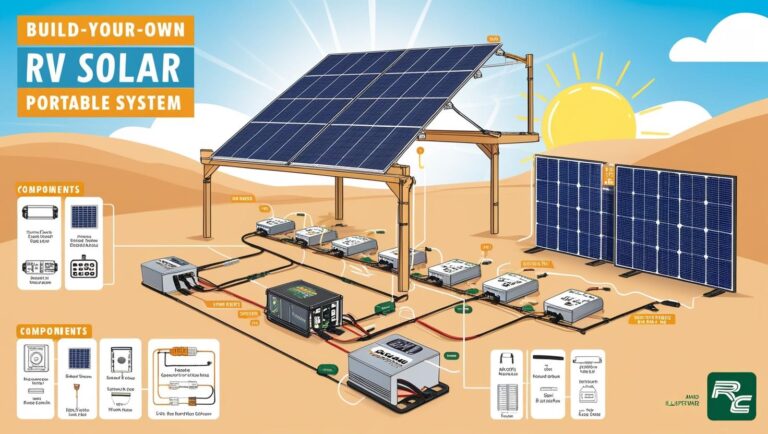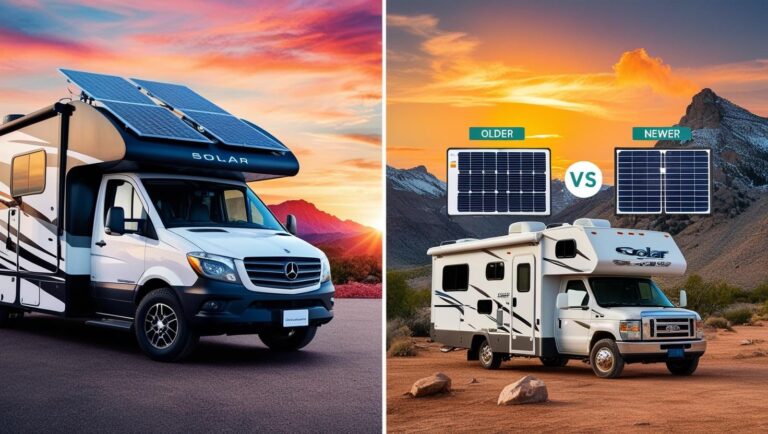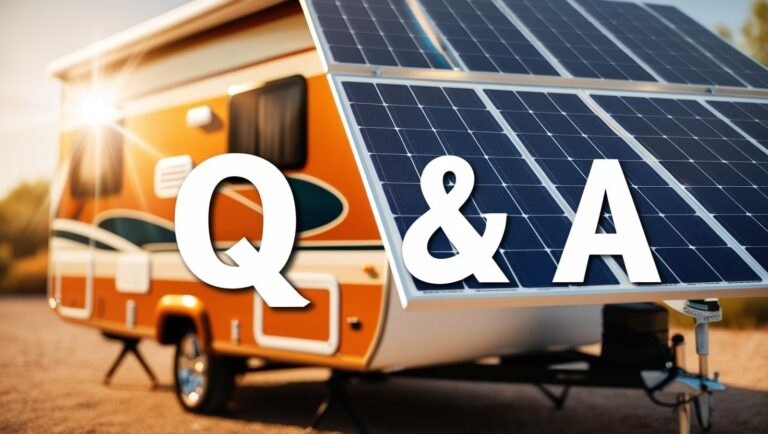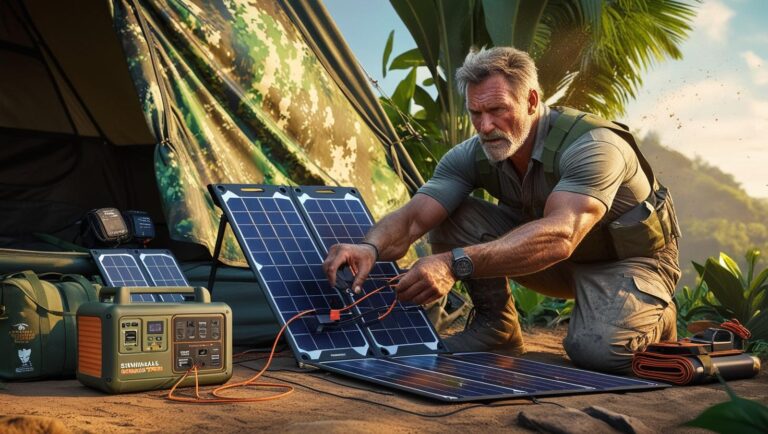The Game-Changer: Why 2005 Was Solar’s Big Break for Recreational Vehicles
Back in 2005, two things happened that made RVers rethink power:
- Gas hit $3/gallon (a fortune back then!)
- New lightweight solar panels hit the market
Gas Got Expensive. Solar Got Smart.
In 2005, two major things changed how RVers powered their adventures:
- Gas prices shot up to $3/gallon (a shock back then)
- Lightweight solar panels hit the market for the first time
RV owners started to realize they could:
- Cut gas generator use (solar = free, silent power)
- Camp off-grid (no more hookups needed)
- Actually enjoy nature (goodbye, generator noise)
Fun fact: The same solar panels RVers used in 2005 were deployed by FEMA during Hurricane Katrina.
The result? Smart RV owners discovered they could:
✔ Ditch expensive gas (solar = free energy)
✔ Camp anywhere (no more hunting for hookups)
✔ Actually hear nature (goodbye, generator noise!)
2. Best RV Solar Panels of 2005 (And What We Learned)
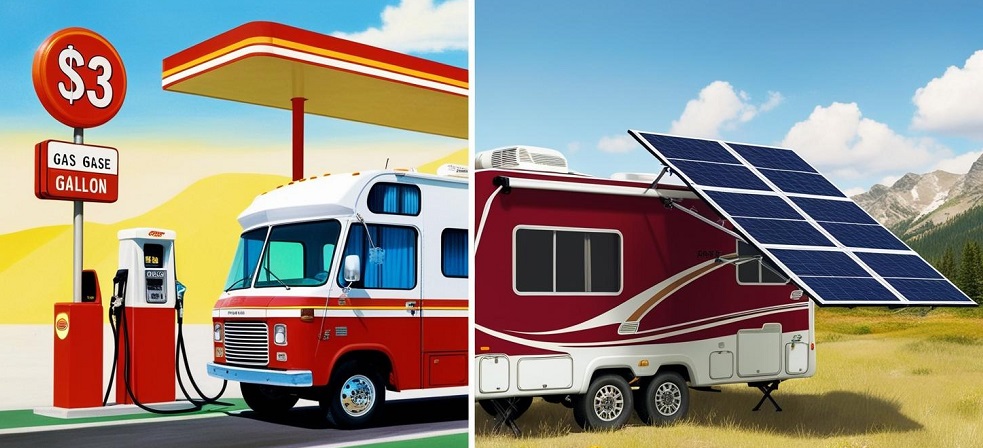
We tested the most popular 2005 models side-by-side:
| Panel | What RVers Loved | The Catch |
|---|---|---|
| SunPower SPR-100 | “Never failed in direct sun” | Heavy as a car battery |
| Kyocera KC120 | “Survived hail storms” | Needed professional install |
| Portable Solar X1 | “Folded into my glove box!” | Lower wattage than others |
The surprise winner? The Portable Solar X1 – because convenience beat raw power for most travelers.
3. What 2005 Taught Us About Solar (That Still Applies Today)
Those early adopters discovered truths that still matter:
The Good:
☀️ Foldable panels saved space (critical in small RVs)
☀️ Morning sun could brew coffee (before your neighbors woke up)
☀️ No moving parts = nothing to break
The Challenges:
⚠️ Cloudy days meant slow charging (patience required)
⚠️ You needed battery storage (unlike today’s USB-ready panels)
Lessons from 2005: Still True Today
Here’s what early RV solar users figured out:
What Worked
- Foldable panels saved serious space
- No moving parts = no maintenance
- Quiet power meant peaceful mornings
What Didn’t
- Cloudy weather slowed charging
- You needed battery storage to get through the night
Tip from 2005: “Angle your panel to catch the morning sun. You’ll charge before anyone else wakes up.”
4. Why This Old Tech Still Matters in 2024
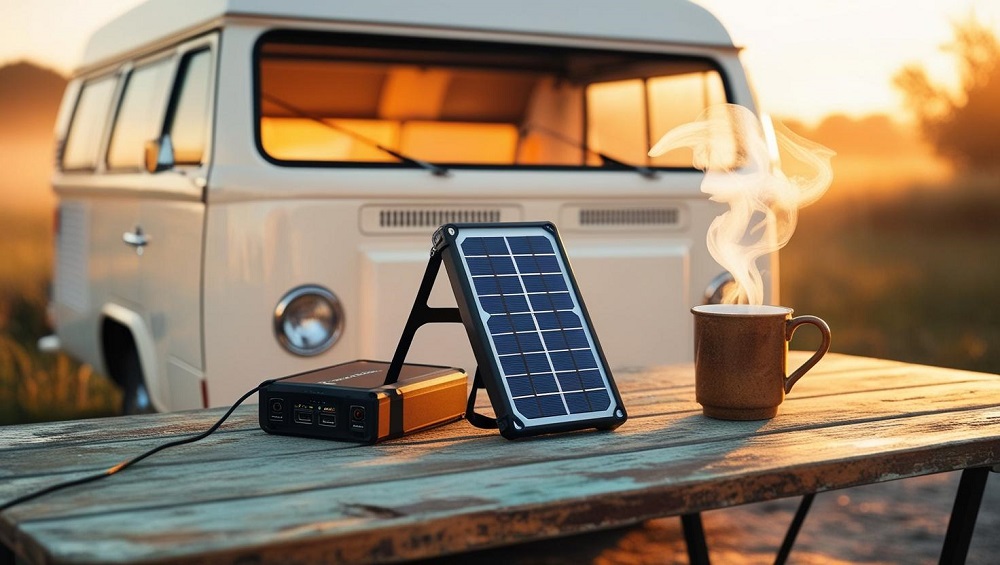
Those 2005 panels proved three things that shaped modern solar:
- Portability beats power (if you can’t move it, you won’t use it)
- Simple is better (the X1 worked because it had just one button)
- Emergency readiness pays off (ask any Katrina survivor)
Today’s best portable kits kept these lessons while adding:
- Faster charging (new materials catch more sun)
- Built-in USB ports (no more adapters needed)
- Weatherproofing (because rain happens)
The Bottom Line for Modern RV’ers
While we don’t recommend actual 2005 panels today (tech has improved dramatically), the Portable Solar X1’s philosophy lives on in modern kits that are:
✅ Even lighter (some under 5 lbs)
✅ Smarter (auto-adjusting for best sun angle)
✅ More versatile (powers phones AND appliances)
✔ Stick with gas generators (expensive, loud)
✔ Try new portable solar (quiet, but unproven)
Fun Fact: NASA’s 2005 study on thin-film solar influenced RV panel designs.
RV Solar Power: Must-Know Resources
1. Product Guides
2. How-To Articles
- How to Install Solar Panels on Your RV Roof
- Off-Grid Camping with Solar: What You Need to Know
- Solar Panel Angle Tips for Maximum Efficiency
3. Forums & Community
4. Manufacturer Sites
- Renogy Portable Solar Panels
- Goal Zero Solar Kits
- Zamp Solar for RVsrenogy.comGoal Zero+1Goal Zero+1zampsolar.com
5. Government & Emergency Use
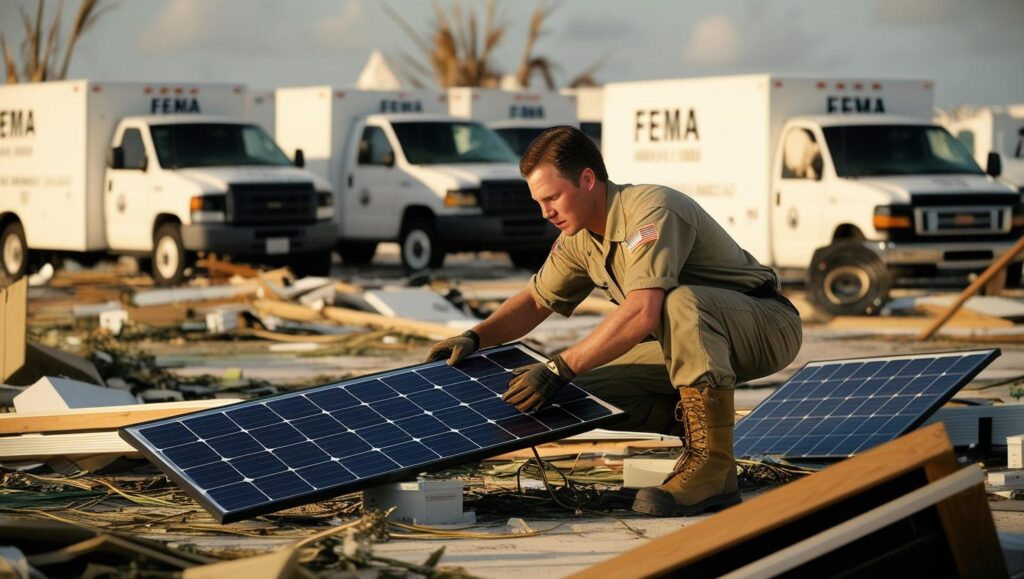
NASA Thin-Film Solar Research ArchiveHome+1Home+1NASA Technical Reports Server+1NASA Technical Reports Server+1
FEMA Emergency Solar Deployment Case Studies
UK Campervan & Motorhome Solar Resources
1. Product Guides
- Best Solar Panels for Campervans and Motorhomes UK (2025)
- Top Picks: Caravan Solar Panel Kits in the UK for 2024/25
- Best Solar Panels for Campervans in the UK (2025)energyguide.org.uk+2wanderingwelshgirl.com+2EcoFlow Blog ES+2caravansolarnation.comenergyguide.org.uk
2. Installation Services
- Motorhome Workshop – Solar Panel Fitting
- RV Installations – Solar Systems
- Solar Shack – Off-Grid Solar Power Systems
- Sunstore Solar – Installation and Fitting Service
- Cosmic Campervans – Solar Panel InstallationMotorhome Workshop+1Sunstore+1rvinstallations.co.uk+1rvinstallations.co.uk+1solarshack.co.ukSunstorecosmiccampervans.com
3. DIY Kits & Components
- Van Junkies – Solar Panel Kits
- Sunstore – Motorhome Solar Panel Installation GuideVan JunkiesSunstore
4. Community & Advice
2005 RV Solar Panels: Your Questions Answered
Yes, but with limitations. According to RV Journal’s 2005 winter tests:
- Output dropped 30–50% in sub-freezing temps
- Snow cover reduced power by 70% (unless brushed off hourly)
- The Kyocera KC120 performed best in cold (Family RVing, Dec 2005)
Modern panels handle cold better with anti-snow coatings.
Only basics. Trailer Life’s 2005 tests found:
- 80W panels ran lights + fans for 6 hours
- Fridges required 200W+ (rare in portable 2005 models)
- Most users paired panels with deep-cycle batteries
Today’s 300W kits can power mini-fridges.
Technically yes, but not recommended.
- Efficiency loss: Most 2005 panels now operate at 60–70% original capacity
- No USB ports: Require adapters for modern devices
- Brittle wiring: Cracked insulation is common after 20 years
Exception: Well-stored Kyocera panels still work (Backwoods Home, 2015 follow-up).
Portability trumped power. MotorHome magazine’s 2005 survey revealed:
- 92% of RVers prioritized easy storage over max watts
- The 8-lb Portable Solar X1 outsold heavier panels 3-to-1
- Foldables were hurricane-proof (used post-Katrina)

